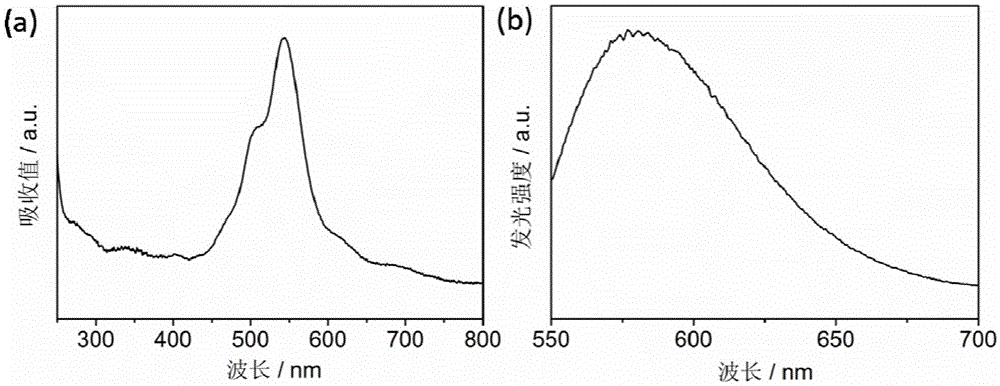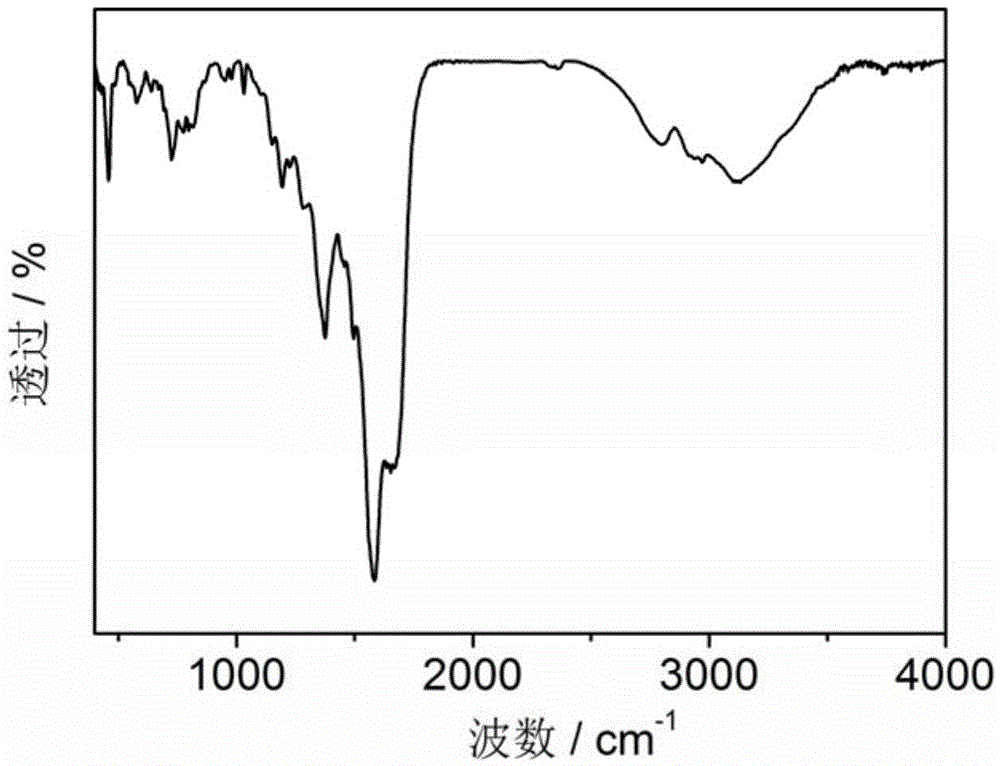Orange light emitting carbon nano dot, preparation method and applications thereof
A carbon nanodot, orange light technology, applied in applications, nanotechnology, nano-optics, etc., can solve the problems of low luminous efficiency, hinder the development and application of carbon nanodots, etc., and achieve improved luminous efficiency and high fluorescence luminescence quantum efficiency. Effect
- Summary
- Abstract
- Description
- Claims
- Application Information
AI Technical Summary
Problems solved by technology
Method used
Image
Examples
preparation example Construction
[0047] The present invention also provides a preparation method of orange light-emitting carbon nano-dots, comprising the following steps:
[0048] Dissolving urea and polycarboxylates in high-boiling organic solvents, heating and reacting under airtight conditions to obtain nitrogen-rich carbon-based cores;
[0049] The nitrogen-rich carbon-based inner core is dispersed in an alkaline solution for treatment to obtain orange light-emitting carbon nano-dots.
[0050]In the present invention, firstly, urea and polycarboxy compounds are dissolved in a high-boiling point organic solvent. In the present invention, the polycarboxy compound is preferably citric acid. The high boiling point organic solvent is preferably one or more of N, N'-dimethylformamide (DMF), N, N'-dimethylacetamide (DMAC) and dimethylsulfoxide (DMSO) kind.
[0051] Wherein, the present invention has no special limitation on the sources of the urea, the polycarboxy compound and the high-boiling point organic ...
Embodiment 1
[0088] (1) 2 g of urea and 1 g of citric acid were formulated into 10 mL of dimethylformamide (DMF) solution, placed in a polytetrafluoroethylene autoclave, and reacted at 160 ° C for 4 hours. The resulting solution was removed by rotary evaporation to remove most of the DMF, and a large amount of ethanol was added to obtain a precipitate, which was carbon nanodots with a nitrogen-rich carbon-based core and a large number of carboxyl functional groups on the surface.
[0089] (2) Dissolve the carbon nano-dots obtained in (1) in 20mL NaOH aqueous solution (50mg / mL) and stir for 1min. -1 Centrifuge at high speed for 10min. The solid obtained by centrifugation is washed with water and centrifuged (16000rmin -1 , 10 min) twice to wash off excess alkali and salt impurities, and freeze-dry at -40°C to obtain orange light-emitting carbon nanodots.
[0090] Carry out ultraviolet-visible absorption and fluorescence emission spectroscopic analysis to the carbon nano-dot prepared in emb...
Embodiment 2
[0094] (1) 4 g of urea and 1 g of citric acid were prepared into 10 mL of dimethylformamide (DMF) solution, placed in a polytetrafluoroethylene autoclave, and reacted at 160° C. for 10 hours. The resulting solution was removed by rotary evaporation to remove most of the DMF, and a large amount of ethanol was added to obtain a precipitate, which was carbon nanodots with a nitrogen-rich carbon-based core and a large number of carboxyl functional groups on the surface.
[0095] (2) Dissolve the carbon nano-dots obtained in (1) in 20mL NaOH aqueous solution (50mg / mL) and stir for 1min. -1 Centrifuge at high speed for 10min. The solid obtained by centrifugation is washed with water and centrifuged (16000rmin -1 , 10 min) twice to wash off excess alkali and salt impurities, and freeze-dry at -40°C to obtain orange light-emitting carbon nanodots.
[0096] Carry out ultraviolet-visible absorption and fluorescence emission spectroscopic analysis to the carbon nano-dot prepared in embo...
PUM
| Property | Measurement | Unit |
|---|---|---|
| Particle size | aaaaa | aaaaa |
| Particle size | aaaaa | aaaaa |
Abstract
Description
Claims
Application Information
 Login to View More
Login to View More - R&D
- Intellectual Property
- Life Sciences
- Materials
- Tech Scout
- Unparalleled Data Quality
- Higher Quality Content
- 60% Fewer Hallucinations
Browse by: Latest US Patents, China's latest patents, Technical Efficacy Thesaurus, Application Domain, Technology Topic, Popular Technical Reports.
© 2025 PatSnap. All rights reserved.Legal|Privacy policy|Modern Slavery Act Transparency Statement|Sitemap|About US| Contact US: help@patsnap.com



